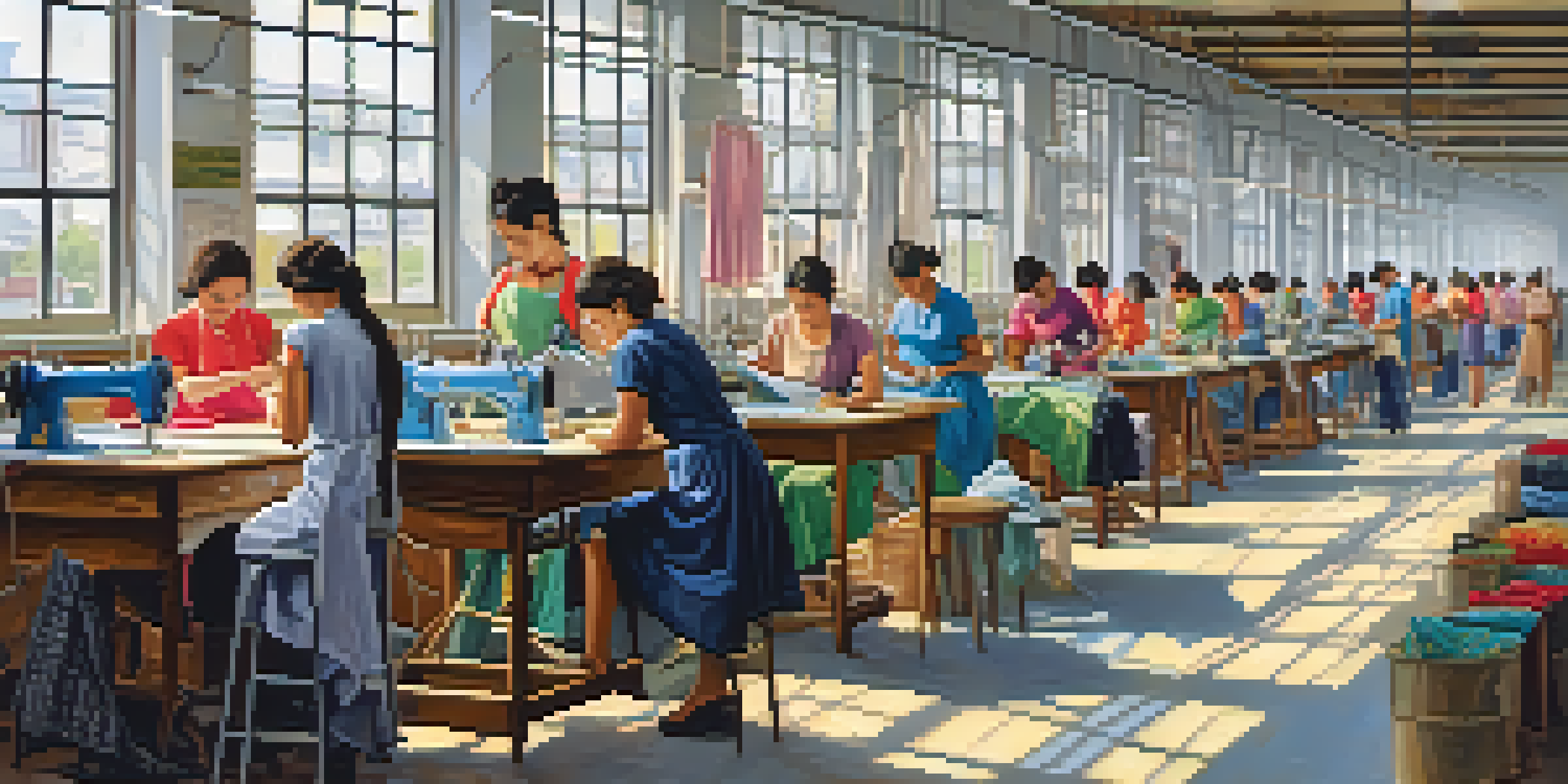Fashion Transparency: Why It Matters for Conscious Consumers

Understanding Fashion Transparency: What Is It?
Fashion transparency refers to the openness brands have about their production processes, materials, and supply chains. For consumers, this means having access to information about where and how their clothing is made. By shedding light on these details, brands can foster trust and encourage informed purchasing decisions.
The fashion industry is a reflection of our values, and with transparency, we can align our purchases with our ethical beliefs.
In a world where fast fashion dominates, understanding this concept is crucial. Many shoppers are unaware of the environmental and ethical implications of their purchases. Fashion transparency serves as a guiding light, helping consumers navigate the often murky waters of the clothing industry.
Ultimately, fashion transparency empowers consumers to make choices that align with their values. When shoppers know the story behind each garment, they can feel confident that their purchases support ethical practices and sustainable options.
Why Transparency Matters for Conscious Consumers
For conscious consumers, transparency is more than just a buzzword; it's a necessity. It allows individuals to align their purchasing habits with their beliefs about sustainability and ethics. By choosing brands that prioritize transparency, consumers can contribute to a more responsible fashion industry.

Moreover, transparency helps to combat issues like exploitation and environmental degradation. When brands openly share their practices, it creates accountability and encourages them to improve. This, in turn, can lead to better working conditions for garment workers and reduced environmental impact.
Fashion Transparency Empowers Consumers
Understanding fashion transparency allows consumers to make informed choices that align with their values of sustainability and ethics.
In essence, transparency is a powerful tool for consumers who want to make a difference. By supporting brands that are open about their practices, shoppers can play a pivotal role in promoting a more ethical and sustainable fashion landscape.
The Role of Certifications and Labels in Fashion
Certifications and labels serve as benchmarks of transparency in the fashion industry. They provide consumers with a quick way to identify brands that meet specific ethical and sustainable criteria. Examples include the Global Organic Textile Standard (GOTS) and Fair Trade certifications, which signal commitment to responsible practices.
Transparency is not just about revealing information; it's about building trust and creating a more sustainable future.
These labels can simplify decision-making for shoppers who are eager to support sustainable brands. By looking for these recognitions, consumers can feel more confident in their purchases, knowing they are backing brands that uphold ethical standards.
However, it's essential to research what these certifications mean. Not all labels are created equal, and some may lack rigorous standards. Understanding the difference can help consumers make truly informed choices.
How to Research Fashion Brands Effectively
Researching fashion brands might sound daunting, but it doesn't have to be. Start by visiting a brand's website and looking for sections dedicated to their sustainability practices and ethical commitments. Many brands are now showcasing their supply chains and production processes, providing valuable insights for conscious consumers.
Another great resource is social media. Brands that prioritize transparency often share behind-the-scenes content that highlights their practices. Following them can offer a more personal glimpse into their operations and values.
Certifications Simplify Brand Research
Certifications and labels serve as quick indicators of a brand's commitment to ethical and sustainable practices, helping consumers identify responsible options.
Lastly, consider using third-party resources like ethical fashion directories. Websites and apps dedicated to sustainability can help you find brands that align with your values. With a little effort, you can easily identify which brands are genuinely transparent.
The Impact of Fashion Transparency on Consumer Choices
Fashion transparency significantly influences consumer choices, driving a shift towards more ethical purchases. As shoppers become more aware of the implications of their buying habits, many are opting for brands that prioritize transparency. This change is reshaping the market and pushing more companies to adopt responsible practices.
Moreover, informed consumers are often willing to invest in higher-quality items that are produced sustainably. This shift away from fast fashion promotes longevity and reduces waste, benefiting the environment in the long run. It's a win-win for both consumers and the planet.
When consumers demand transparency, they encourage brands to raise their standards. By voting with their wallets, shoppers can help create a fashion industry that values ethical practices and sustainability.
Challenges Brands Face in Achieving Transparency
While transparency is essential, many brands face significant challenges in achieving it. The complexity of global supply chains can make it difficult to track every step of the production process. Additionally, some brands may worry that revealing too much information could put them at a competitive disadvantage.
Furthermore, not all brands have the resources to implement transparent practices. Smaller businesses, in particular, may struggle with the costs associated with ethical sourcing and production. Despite these challenges, many brands are recognizing the importance of transparency as a way to build trust with consumers.
Future Trends Favor Transparency
As consumer demand for ethical practices grows, the fashion industry is shifting towards greater transparency, driven by technological advancements and awareness.
Ultimately, overcoming these obstacles requires a commitment to change and collaboration across the industry. As more brands prioritize transparency, the overall landscape will improve, benefiting consumers and the environment alike.
The Future of Fashion: A Shift Towards Transparency
The future of fashion is increasingly leaning towards transparency, driven by consumer demand and technological advancements. Innovative tools, such as blockchain technology, are being explored to enhance traceability in the supply chain. These developments can help brands provide more detailed information about their products, fostering deeper consumer trust.
Moreover, as awareness of sustainability issues grows, more consumers are seeking brands that align with their values. The shift towards ethical consumerism is not just a trend but a movement that is reshaping the industry. Brands that embrace transparency will likely thrive in this evolving landscape.

In conclusion, the push for transparency in fashion is gaining momentum and promises to revolutionize the industry. As consumers continue to prioritize ethical practices, the future looks bright for a more responsible and transparent fashion world.